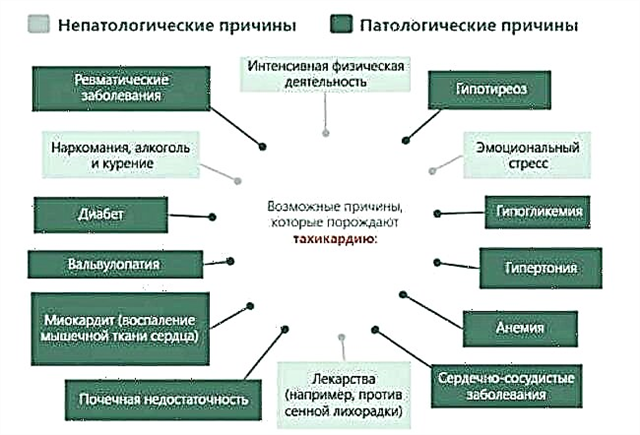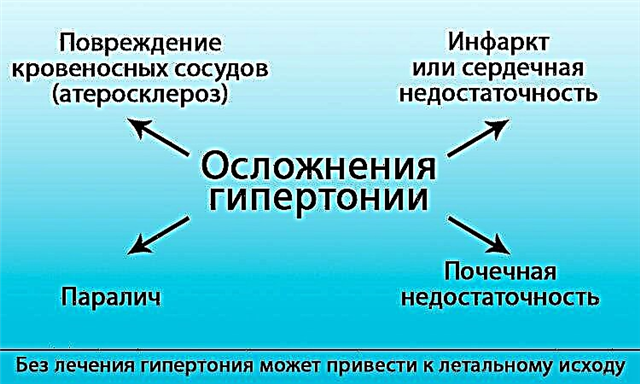Pancreatitis is an inflammatory disease of the pancreas, the organ responsible for the secretion of digestive enzymes and insulin. Few people know that the acute form of the disease can occur not only with symptoms of disruption of the organ and the entire gastrointestinal tract, but also with manifestations of arterial hypertension. The pressure from the pancreas can vary depending on the neglect of the process and the compensatory capabilities of the body, the age of the patient, the state of the autonomic nervous system, and concomitant pathology.
What is pancreatic hypertension and why does it occur?
 In medicine, pancreatic hypertension is called increased pressure in the main duct of the pancreas (RV) due to the obstructed outflow of its juices or additional reflux of bile along the biliary tract. This condition is a complication of the chronic course of the disease and most often causes severe pain during an attack. But the people call this pathology, in which the pressure rises against the background of an exacerbation of pancreatitis.
In medicine, pancreatic hypertension is called increased pressure in the main duct of the pancreas (RV) due to the obstructed outflow of its juices or additional reflux of bile along the biliary tract. This condition is a complication of the chronic course of the disease and most often causes severe pain during an attack. But the people call this pathology, in which the pressure rises against the background of an exacerbation of pancreatitis.
A change in blood pressure may well be a sign of inflammation of the pancreas. At the initial stages of the disease, hypertension is sometimes diagnosed, even in the form of crises. Later, when the body is depleted against the background of enzyme intoxication, persistent hypotension sets in, which is difficult to fight.
It is believed that the cause of hypertension is the development of painful shock, in response to which the body reacts by increasing pressure. Elderly people who have problems with the cardiovascular system are especially prone to this variant of the disease.
Symptoms of pathology
The main symptoms of a combination of hypertension and pancreatitis are:
- an attack of dizziness;
- headache;
- decreased visual acuity, blurred vision;
- numbness of fingers, feeling of "creeping";
- insomnia;
- increased irritability;
- noise or ringing in your ears;
- nosebleeds;
- the appearance of edema on the face and limbs;
- increased sweating;
- pain in the region of the heart.
What is the communication mechanism between the pancreas and blood pressure?
At first glance, it may seem that the pancreas and pressure cannot be connected with each other in any way, since completely different body systems are responsible for them. But in the human body, everything is interconnected, and diseases of the gastrointestinal tract, including the pancreas, are a common cause of hypertension.
There are several mechanisms for the relationship of high blood pressure to pancreatitis. Hypertension in acute inflammation of the gland is characteristic of the initial stage. Against the background of a severe pain attack, stress hormones are released, the autonomic nervous system is activated. As a result, vasospasm occurs and adequate blood circulation in all internal organs is impaired. It is even possible to develop a hypertensive crisis with all the ensuing complications. In the acute stage, the increase in pressure is not long-term and is replaced by persistent hypotension.
 In the chronic course of pancreatitis, pressure is intermittent, but more often patients suffer from hypertension. Since the affected pancreas cannot fully cope with its functions, there is a deficiency of nutrients, micro- and macroelements necessary to strengthen the walls of blood vessels, the heart, and nutrition of the nervous system are not absorbed. With periodic exacerbations, the intoxication of the body with decay products increases.
In the chronic course of pancreatitis, pressure is intermittent, but more often patients suffer from hypertension. Since the affected pancreas cannot fully cope with its functions, there is a deficiency of nutrients, micro- and macroelements necessary to strengthen the walls of blood vessels, the heart, and nutrition of the nervous system are not absorbed. With periodic exacerbations, the intoxication of the body with decay products increases.
In addition, the inflamed gland swells, squeezing nearby lymph nodes, blood vessels, nerve endings and plexuses. Autonomic innervation is activated and blood pressure increases.
The pancreas also contains cells that produce insulin, a hormone responsible for the utilization of glucose. If the organ suffers from chronic inflammation, pancreatogenic diabetes mellitus may develop over time. In the case of this disease, insulin production is affected, resulting in persistent hyperglycemia (high blood sugar). As a result of pathology, kidney function is disrupted (diabetic nephropathy), sodium is not excreted from the body and retains water, which leads to an increase in the volume of circulating blood and an increase in blood pressure.
How is pancreatic hypertension treated?
 Treatment of high blood pressure and pancreatitis should be done at the same time. The features of therapy depend on the mechanism of hypertension and the form of inflammation of the pancreas.
Treatment of high blood pressure and pancreatitis should be done at the same time. The features of therapy depend on the mechanism of hypertension and the form of inflammation of the pancreas.
When blood pressure rises against the background of an acute attack of pancreatitis, it is necessary to influence not only the underlying disease, but also to quickly remove the pain syndrome, preventing the development of shock. In this phase, antispasmodics and analgesics are actively used. With severe pain that cannot be stopped by conventional drugs, sometimes they resort to narcotic analgesics. Detoxification therapy, correction of water-electrolyte, protein, acid-base balance using saline and colloidal solutions. Under the action of the drugs, vasospasm, edema of the pancreas and surrounding tissues are eliminated, the influence of the autonomic nervous system is reduced. There is no need to take antihypertensive pills separately, since in the acute phase, high pressure can quickly change to hypotension or even collapse.
In the chronic course of pancreatitis, accompanied by high blood pressure, the patient needs constant maintenance antihypertensive therapy (ACE inhibitors, sartans, beta-blockers, diuretics, calcium channel blockers are used). In addition, during an exacerbation, you need to remember about the pancreas: taking enzyme replacement therapy (pancreatin, festal, etc.), suppression of secretory function (contrikal), adherence to a strict diet.
If a patient has high blood pressure in pancreatitis combined with diabetes mellitus, then in addition to antihypertensive therapy, the treatment also includes sugar-reducing, insulin-stimulating, hormone replacement drugs, as well as statins, which prevent the appearance of atherosclerotic plaques and an even greater increase in pressure.
What is the prognosis of a patient with hypertension associated with pancreatitis?
The prognosis of a patient with a combination of pancreatitis and hypertension is poor. In a severe acute course of the disease in the first days, a lethal outcome is possible due to the development of shock.
Chronic inflammation of the pancreas with periodic exacerbations leads to depletion of the body, deviations in the water-salt, electrolyte balance. The appearance of anemia, hypoproteinemia, violation of the ratio of protein fractions, accelerated ESR are possible. These factors negatively affect the work of the cardiovascular system and, against the background of hypertension, can cause a lot of complications, including strokes and heart attacks. The appearance of pancreatogenic diabetes further aggravates the course of the disease and worsens the further prognosis.
 Prevention of complications of pancreatic hypertension are:
Prevention of complications of pancreatic hypertension are:
- adherence to a diet (exclusion of fatty, fried, spicy foods, use plant foods);
- quitting alcohol and smoking;
- normalization of body weight;
- performing moderate physical activity;
- avoidance of stressful situations;
- compliance with the doctor's recommendations.
Conclusions
Arterial hypertension and inflammation of the pancreas are serious diseases and are often related to each other, aggravating the course of each other.Failure to seek medical help during an exacerbation can even lead to death. These pathologies require long-term treatment and constant supportive measures to avoid complications.



